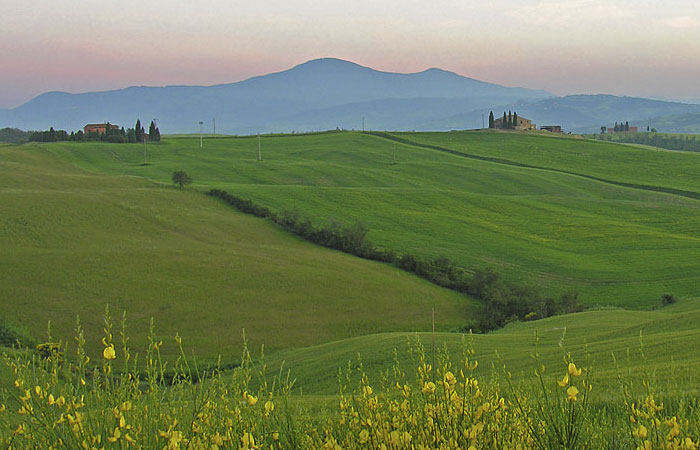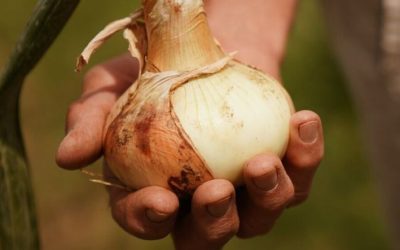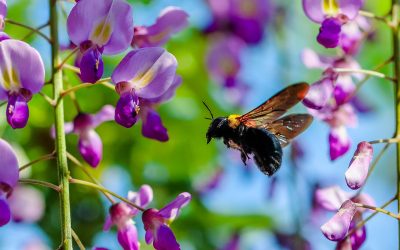 L’Amiata si trova nella Toscana meridionale, ai confini tra le province di Siena e Grosseto.
L’Amiata si trova nella Toscana meridionale, ai confini tra le province di Siena e Grosseto.
L’imponente montagna verde è l’unica isola della terra che non si raggiunge a nuoto, ma semplicemente spinti da una sana curiosità e da una buona dose di fantasia.
L’Amiata è luogo ideale per trascorrere sia una breve che una lunga vacanza in qualsiasi stagione dell’anno. Ce n’è per tutti i gusti: per gli amanti della natura e dell’avventura, per gli appassionati di sci e di arte medievale, per quelli che adorano i bagni termali e la verde collina toscana.
L’Amiata, per morfologia e vicende storiche, è un luogo rimasto incontaminato, un’isola che ha gelosamente custodito i suoi tesori e, ancora oggi, continua a farlo con grande attenzione.
Visibile con il suo inconfondibile profilo dalle colline viterbesi al dal lago Trasimeno, dall’Autostrada del Sole alla costa tirrenica; l’Amiata è l’unica vera montagna della Toscana meridionale.
Creata trecentomila anni fa da un’imponente serie di eruzioni; conserva le bizzarre rocce trachitiche, le sorgenti calde e un suolo fertilissimo, tipico dei vulcani.
Sui suoi fianchi i boschi e i torrenti, i pascoli e le terme, disegnano una natura sorprendente e ricca di spunti per i visitatori di tutti i gusti e di tutte le età.
Cuore dell’Amiata è la grande foresta tra i mille metri di quota e la cima. Formata da faggi, castagni, abeti e querce, permette magnifiche passeggiate a piedi, in bicicletta e a cavallo lungo decine di chilometri di sentieri segnati, piacevoli pic nic nei prati e nelle radure e ospita in alto le belle piste da sci del comprensorio. Oggi, in tutte le stagioni, la foresta offre al visitatore tranquillità, silenzio, piena immersione nel verde.
Gli ampi spazi solitari consentono la sopravvivenza del lupo, nelle valli più impervie nidificano numerose specie di rapaci. Nel folto, con un po’ di fortuna, i visitatori possono incontrare cinghiali, caprioli e scoiattoli, e ascoltare il ritmico battere dei picchi. Il rigoglioso sottobosco offre funghi, fragole, lamponi. Non c’è solo la foresta.
Più in basso, sul versante maremmano, le alte valli dell’Albegna e della Fiora offrono un ambiente più caldo, che alterna uliveti e vigneti alla macchia mediterranea ed ai pascoli, sorvegliato dalle vette calcaree del Monte Labbro e del Monte Civitella.
Sul versante senese, i dolcissimi colli coltivati, i filari di cipressi e i calanchi della Val d’Orcia riportano verso il cuore della Toscana. Legati alla natura vulcanica del suolo sono le localitˆ termali, e i soffioni sfruttati come fonti di energia.
Tratto da “Monte Amiata”, pubblicazione a cura dell’Azienda di Promozione Turistica dell’Amiata. Amiata is in southern Tuscany, on the border between the provinces of Siena and Grosseto.
Amiata is in southern Tuscany, on the border between the provinces of Siena and Grosseto.
This imposing green mountain is the only island in the world that cannot be reached by swimming, but simply driven by a healthy curiosity and a good amount of imagination.
Amiata is the perfect place for spending both a short break and a long holiday in any season of the year. There’s something for all tastes: for lovers of nature and adventure, for skiers and lovers of medieval art, for those who love hot springs and the green Tuscan hills. Thanks to its morphology and history, Amiata is a place that has remained uncontaminated, an island that has jealously guarded its treasures and continues to do so today with the greatest of care.
Amiata is the only real mountain in southern Tuscany and its unmistakable profile can be seen from the hills of Viterbo to Lake Trasimeno and from the A1 motorway to the Tyrrhenian coast.
Created three hundred thousand years ago by an imposing series of eruptions, it features bizarre trachytic rocks, hot springs and a very fertile soil, typical of volcanoes.
On its slopes the woods, streams, meadows and hot springs offer surprising natural curiosities for visitors of all tastes and ages.
The heart of Amiata is the large forest lying between one thousand metres and the summit.
Comprising beech, chestnut, fir and oak trees, it offers magnificent walks, bike and horse rides along dozens of kilometres of marked paths, pleasant picnics in the meadows and clearings and, at the top, beautiful ski slopes. In all seasons, the forest offers visitors peace and quiet and total immersion in nature.
The large solitary spaces allow the wolf to survive, in the most impervious valleys numerous species of birds of prey make their nests. In the copses, with a bit of luck, visitors can meet wild boar, roe deer and squirrels, and listen to the rhythmic hammering of the woodpeckers. The thick undergrowth offers mushrooms, strawberries and raspberries.
Amiata is not just forest, though. Lower down, on the Maremma side, the deep Albegna and Fiora valleys offer a warmer environment, alternating olive groves with Mediterranean bush and pastures, overlooked by the calcareous gaze of Mounts Labbro and Civitella.
On the Sienese side, the sweet cultivated hills, rows of cypress trees and ravines of the Orcia Valley lead towards the heart of Tuscany. The hot springs and “soffioni”, exploited as sources of energy, are connected with the volcanic nature of the soil.




0 commenti